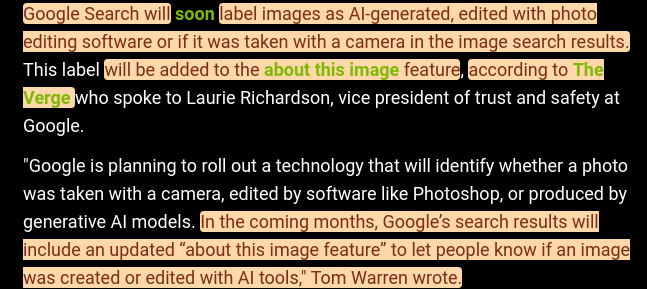Google is planning to roll out a technology that will identify whether a photo was taken with a camera, edited by software like Photoshop, or produced by generative AI models.
So they are going to use AI to detect AI. That should not present any problems.
